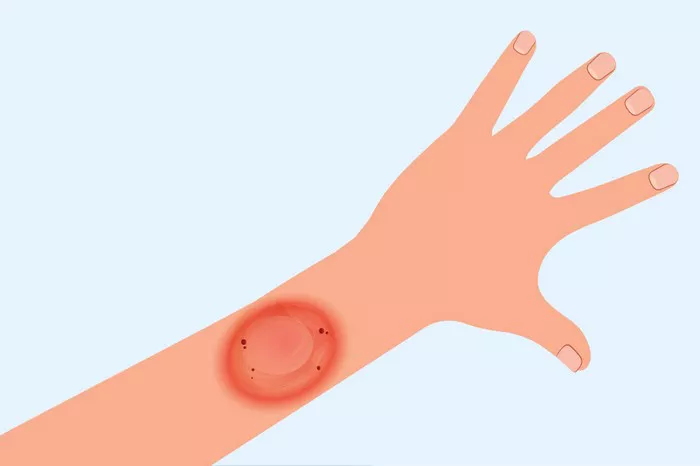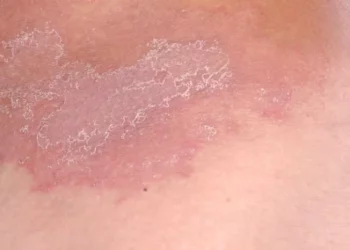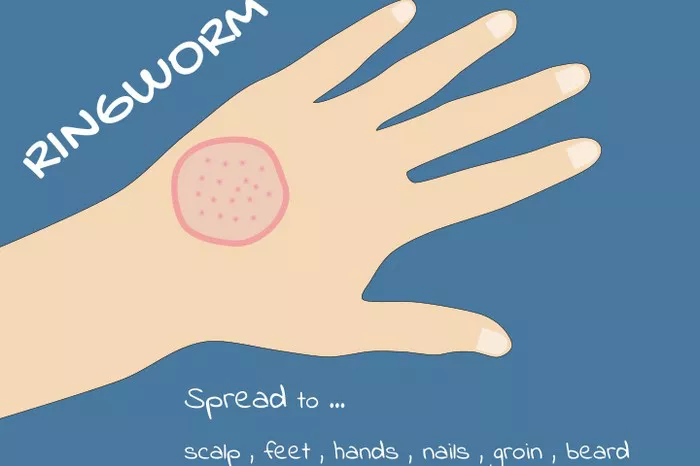Ringworm, despite its name, is not caused by worms but rather a fungal infection. It manifests as a red, circular rash on the skin, often accompanied by itching, scaling, and in some cases, oozing. While the appearance of oozing might cause concern, understanding the underlying mechanisms can demystify this symptom and aid in effective management. In this comprehensive article, we delve into the reasons behind why ringworm may ooze and explore the implications for diagnosis and treatment.
Understanding Ringworm: A Fungal Intruder
Before delving into the specifics of why ringworm oozes, it’s essential to grasp the nature of the infection itself. Ringworm, medically known as dermatophytosis, is caused by various fungi belonging to the dermatophyte group, primarily Trichophyton, Microsporum, and Epidermophyton species. These fungi thrive on keratin, a protein found in the outer layer of the skin, hair, and nails, making these areas their preferred habitat.
Ringworm typically spreads through direct skin-to-skin contact with an infected individual or by touching contaminated surfaces such as towels, clothing, or gym equipment. It can affect people of all ages and backgrounds and is particularly common in environments where close contact is frequent, such as schools, gyms, and communal living spaces.
The Oozing Phenomenon: Unraveling the Causes
Oozing in ringworm occurs due to several interrelated factors, each contributing to the manifestation of this symptom:
1. Inflammation and Tissue Damage: When the fungal infection takes hold in the skin, it triggers an immune response characterized by inflammation. This inflammatory process can lead to the destruction of skin cells and disruption of the skin barrier, allowing fluids to escape from the affected area. The resulting oozing is often serous or clear in nature, resembling a watery discharge.
2. Secondary Bacterial Infection: Prolonged or severe cases of ringworm can pave the way for secondary bacterial infections. Bacteria such as Staphylococcus aureus or Streptococcus pyogenes may colonize the damaged skin, leading to the formation of pustules or abscesses. These pockets of infection can rupture, causing the release of purulent material, which contributes to the oozing seen in advanced cases of ringworm.
3. Moisture and Maceration: The warm, moist environment created by the fungal infection and subsequent inflammation can exacerbate skin maceration. Maceration occurs when prolonged exposure to moisture softens and breaks down the skin, making it more susceptible to oozing and secondary infections. In areas where skin folds or rubs against itself, such as the groin or armpits, this effect may be more pronounced.
4. Scratching and Trauma: The intense itching associated with ringworm often leads to scratching, which can further damage the skin and exacerbate oozing. Scratching not only breaks the skin barrier but also introduces dirt, bacteria, and other microorganisms into the wound, increasing the risk of infection and prolonging the healing process.
Clinical Implications and Management Strategies
Recognizing the significance of oozing in ringworm is crucial for accurate diagnosis and effective management. Healthcare professionals should conduct a thorough clinical assessment, taking into account the appearance of the rash, associated symptoms, and patient history. Laboratory tests such as skin scrapings or fungal cultures may be necessary to confirm the diagnosis and identify the causative organism.
Once diagnosed, the treatment of ringworm aims to eradicate the fungal infection, alleviate symptoms, and prevent recurrence. Antifungal medications, whether topical or oral, form the cornerstone of therapy. Topical agents such as clotrimazole, miconazole, or terbinafine are typically used for localized infections, while oral medications like fluconazole or griseofulvin may be necessary for more extensive or severe cases.
In addition to antifungal therapy, management strategies for oozing in ringworm include:
1. Topical Antiseptics: Application of antiseptic solutions or creams can help reduce bacterial colonization and prevent secondary infections. Common antiseptics include povidone-iodine, chlorhexidine, or hydrogen peroxide.
2. Emollients and Barrier Creams: Moisturizing the affected skin with emollients or barrier creams can help restore the skin barrier function and alleviate dryness and itching. Ingredients such as petrolatum, lanolin, or colloidal oatmeal are often beneficial.
3. Wound Care: Proper wound care is essential for preventing complications and promoting healing. Clean the affected area gently with mild soap and water, pat dry, and apply appropriate dressings if needed. Avoid occlusive dressings in areas prone to moisture accumulation.
4. Symptom Management: Over-the-counter antihistamines or corticosteroid creams may provide symptomatic relief from itching and inflammation. However, caution should be exercised with prolonged corticosteroid use, as it can exacerbate fungal infections or cause skin thinning.
Conclusion
In summary, oozing in ringworm is a multifaceted phenomenon arising from inflammation, tissue damage, secondary infections, moisture, and trauma. Understanding the underlying mechanisms behind this symptom is crucial for healthcare professionals to provide timely and effective care to affected individuals. By adopting a comprehensive approach that addresses both the fungal infection and associated complications, clinicians can help alleviate symptoms, promote healing, and prevent recurrence, ultimately restoring the skin to its healthy state.
Related Topics:
What Does Healing Ringworm Look Like in Dogs

























